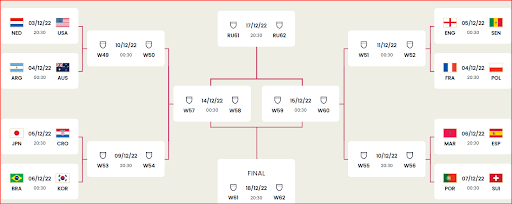Let us analysis the stage wise accuracy rates.
Problem with this accuracy calculation is that the error is propagated. Since Oxford predicted that the Belgium will feature in the final in which they were out of the competition from the first round, that is reflected at every stage.Would you accept this model with just over 50% of accuracy. That means it is just over the ad-hoc probability prediction. As we have been insisting, predicting the results outcome of a sport event, is not yet successful, it least for the moment.





